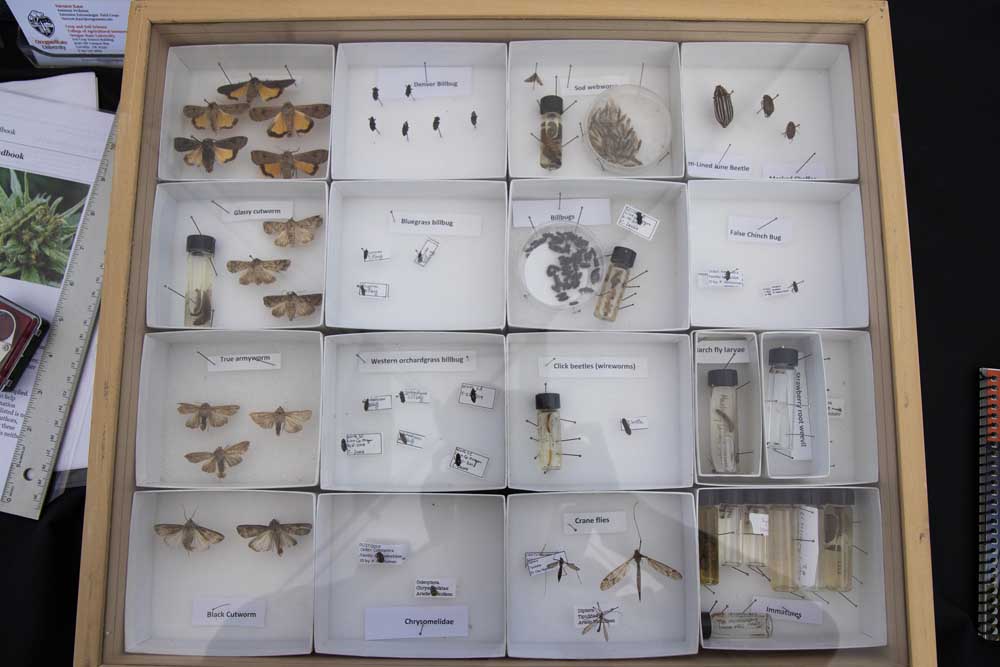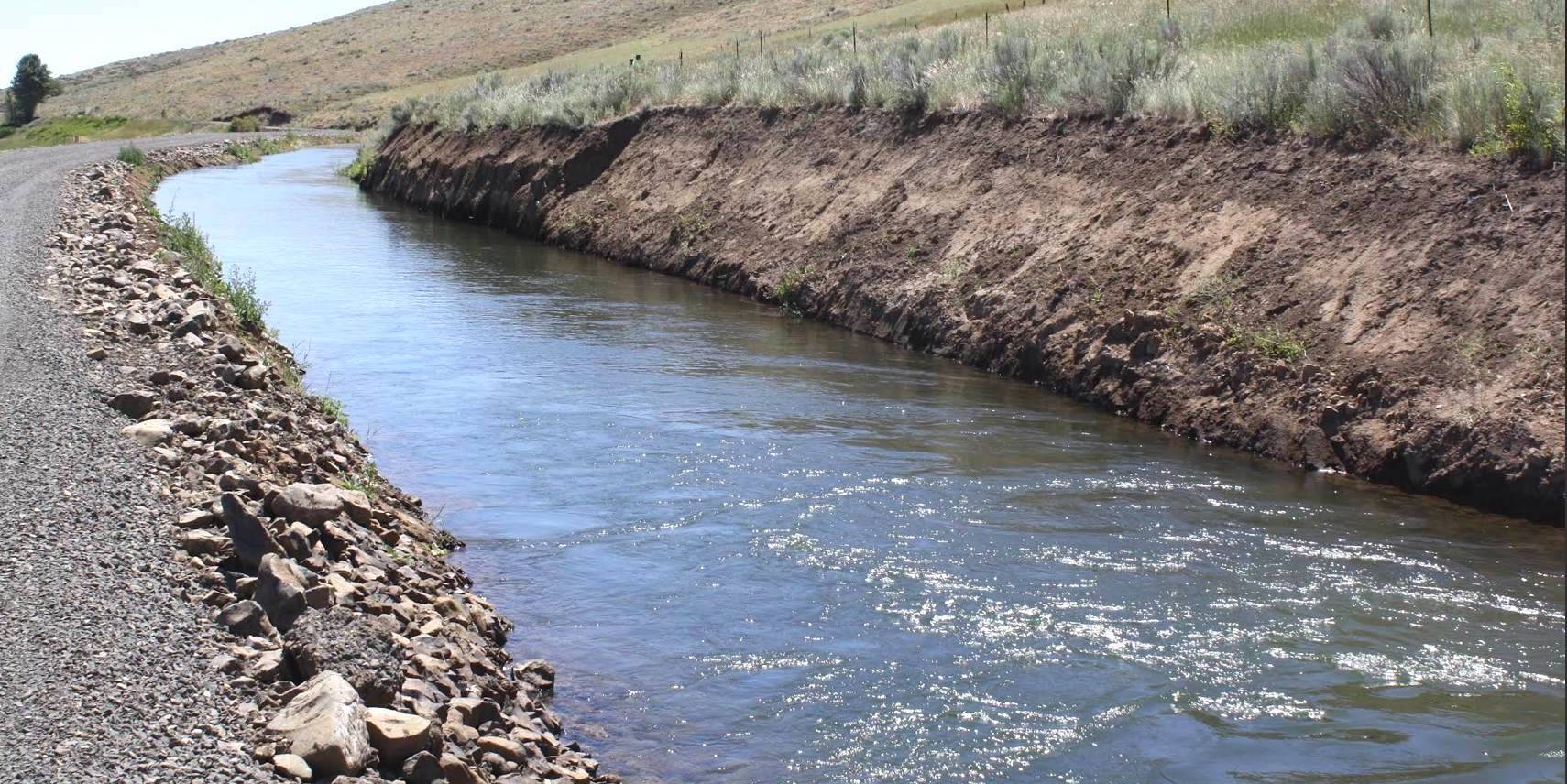Growers learn about grass seed, legume, cereal research
Published 3:30 pm Thursday, May 25, 2023

- An insect display case organized by Oregon State University Extension Service's entomology group.
CORVALLIS, Ore. — Trucks pulling flatbed trailers drove through a field past tall fescue.
Trending
On the truck beds sat farmers and scientists — about 270 in all. Some perched atop crates, while others sat with their legs hanging over the sides, laughing and swapping stories.
The farmers were in Corvallis for the Hyslop Farm Field Day, an event about the latest research in grass seed, legume and cereal crops co-hosted by Oregon State University and USDA.
Throughout the day, growers attended sessions and visited interactive exhibits.
Trending
Crop outlook
Several growers said their spring crops are struggling due to a dry fall followed by a cold, wet winter and spring that only recently turned hot — a recipe that hindered root development.
“It’s not a secret to anyone that fields look subpar,” said Nicole Anderson, an OSU agronomist.
Anderson said perennial ryegrass, for instance, is performing below average this year in the Willamette Valley. The valley, she said, is not alone; much of the crop in Europe has faced freezing problems, and Canada has had cutworm outbreaks.
“I guess the good news is, misery loves company,” said Anderson.
Symphylan control
OSU entomologist Navneet Kaur and co-researchers are exploring how to control symphylans — tiny, centipede-like pests that feed on root systems — in grass seed crops.
As Oregon farmers lose the use of chlorpyrifos, Kaur’s team is testing alternative pesticides for symphylan control.
In tall fescue, they found that plots treated with Capture LFR Insecticide outperformed control plots and plots treated with other pesticides.
In perennial ryegrass, they found the pesticides Capture LFR, Warrior II, Velum Prime and Torac all showed some effectiveness 13 days after treatment.
Biochar
Growers use herbicides to control weeds, but ironically, those same herbicides can harm grass seed crops.
To limit weeds while protecting crops, farmers use carbon band seeding, which involves spraying a slurry of activated charcoal over rows where seeds have been drilled. The farmer then sprays an herbicide prior to germination. The charcoal absorbs the herbicide and allows the grass crop to emerge unharmed by the herbicide.
Researchers have been exploring whether biochar can be used as a cheaper, more local alternative to activated charcoal for carbon band seeding.
Clint Mattox, a USDA researcher, said preliminary testing suggests “biochar is basically as effective as activated charcoal, with a few exceptions.”
Alternatives to carbon seeding
OSU is also exploring alternatives to carbon seeding.
In a recent study, researchers coated tall fescue and perennial ryegrass seeds with Concept III, or fluxofenim, as a “safener” to keep the seeds safe from herbicide injury. Early results show seeds coated in Concept III are less likely to experience phytotoxicity from pesticides.
“I’m excited to continue this study next year,” said Pete Berry, an OSU assistant professor.
Managing yellow dwarf viruses
Researchers are studying how to manage yellow dwarf virus outbreaks, caused by aphids.
In perennial grass seed crops, researchers have found some varietals are more susceptible. For example, the Fastball perennial ryegrass variety appears more vulnerable to the virus than the Top Gun II variety.
“It looks like varietal selection matters,” said Seth Dorman, a USDA researcher.
The Fastball variety responded well to a spring insecticide treatment against aphids. Doing treatments throughout the year also worked well. A single fall treatment was not as effective.
In barley, researchers are studying how to develop resistance to yellow dwarf viruses.
Pushing seed yield
Recent OSU studies have shown that when growers use a plant growth regulator such as Palisade EC, especially in combination with mowing or grazing, it can result in higher seed yields.
When researchers mowed annual ryegrass during the spring and used a plant growth regulator, they did not see a change in seed weight, but they did see “a dramatic increase in the number of seeds,” said Anderson, the agronomist.
Septoria leaf blotch resistance
Septoria tritici leaf blotch is a major disease is Willamette Valley wheat.
OSU’s Cereal Pathology and Wheat Breeding programs have been working together to breed wheat with better resistance to Septoria leaf blotch. New research shows it may be possible to combine Septoria resistance and high yield.
Wheat variety testing
The Oregon Cereal Extension Program provides growers with performance information on wheat and barley varieties. Growers can find the latest report on OSU’s wheat website.
Retirement
During lunch, growers showed their appreciation and wished farewell to Patrick “Pat” Hayes, a longtime barley researcher at OSU who announced he plans to retire later this year.
An earlier version of this story misstated that Clint Mattox is an Oregon State University researcher. He is a USDA researcher. The story has been updated to reflect this.







